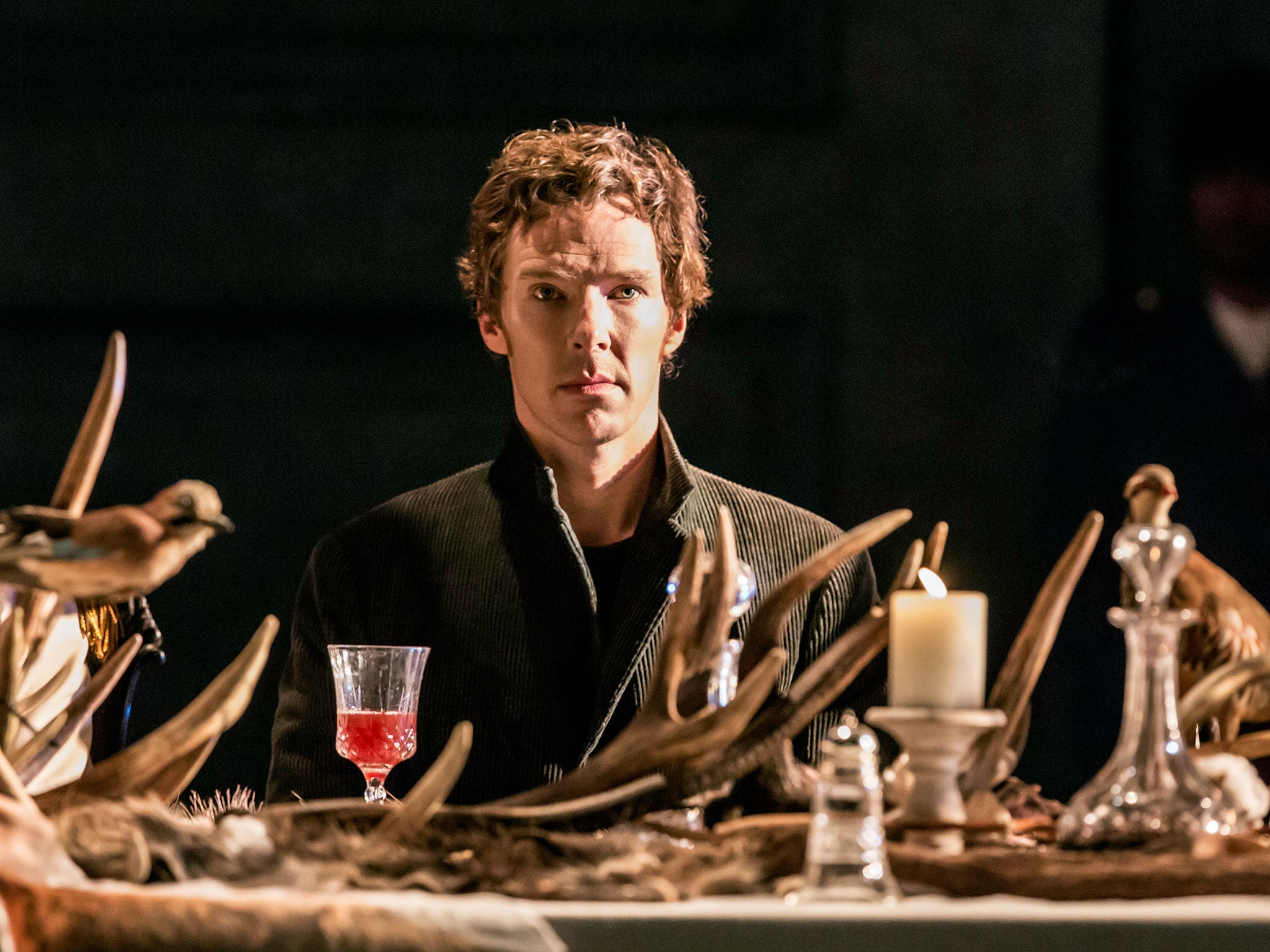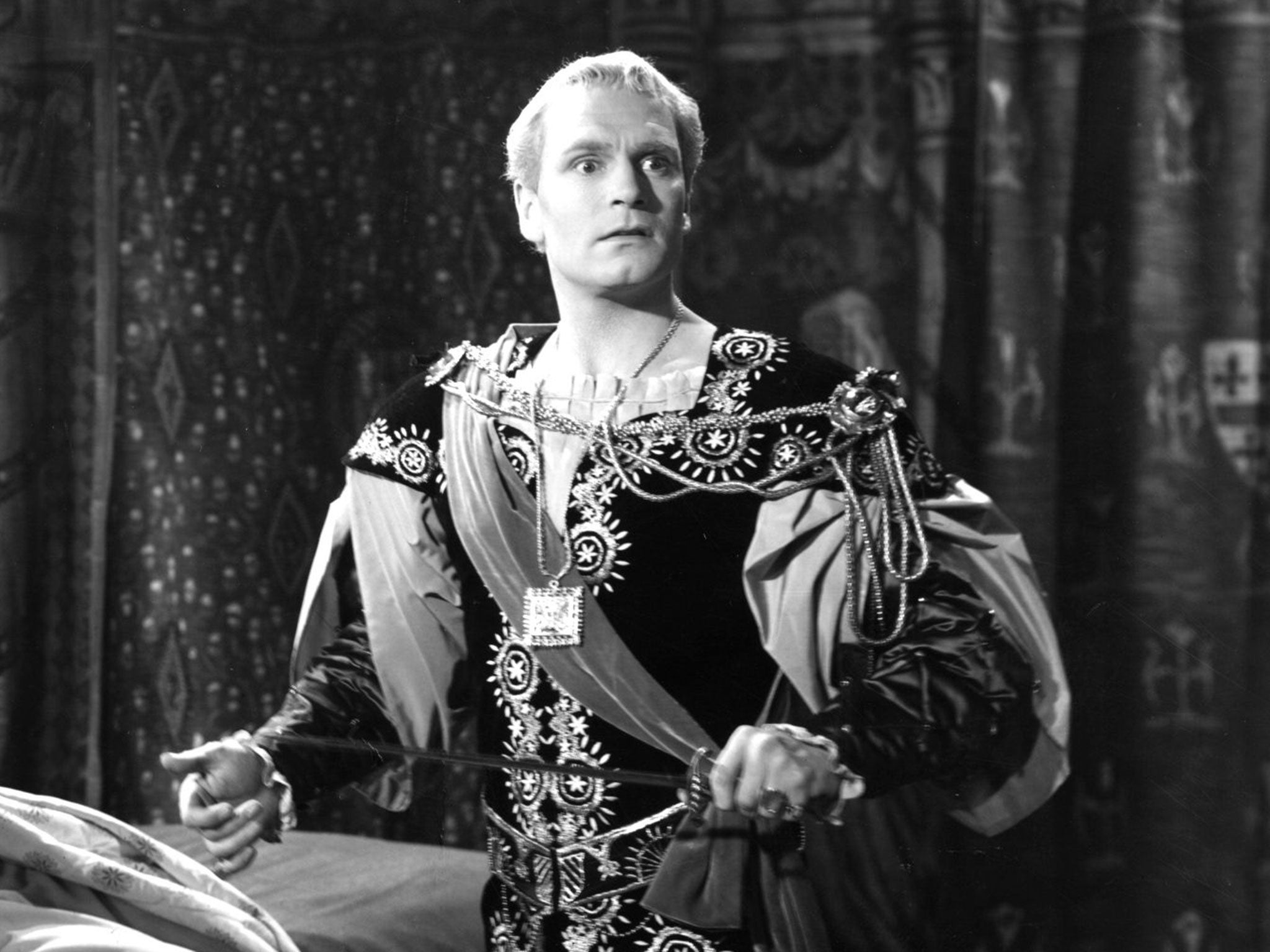Shakespeare’s 400th anniversary: Studying the most famous tragedy of them all
As the world prepares to mark the 400th anniversary of Shakespeare’s death, Howard Jacobson kicks off our unique, collectible series with a study of the most famous tragedy of them all

For my thirteenth birthday an aunt bought me a record of Olivier being Hamlet and Henry V. These performances appealed to contradictory aspects of my nature - the warrior itching to lead his people into battle, the morbid solitary in a billowing white shirt, musing on corruption. To this day I hear the haunting persistence with which Olivier interrogated the gravedigger, “How long will a man lie i’ the earth ere he rot?” A question of such dread quietude it seemed to reverberate through time and space, forever fearing the answer. Later, when I saw the film, it was Olivier challenging the skull of the one-time jester Yorick to make a fine lady laugh at the prospect of her dissolution that taught me what comedy was about.
Hamlet is the greatest of all meditations on death, though the word meditation does scant justice to the play’s bitter exuberance. So let’s put it another way and say that Hamlet himself is the greatest ever comedian of mortality. Olivier addresses Yorick’s skull as if he’s whispering of love, half expecting a reply; other actors have played the scene ventriloquially, with Yorick as the dummy. Both interpretations work, for Hamlet does speak from both sides of the grave, now as a person so alive he cannot think except jestingly, and cannot jest without seriousness – cannot cast a thought into words without seeming to reinvent language itself – now as one who has imagined lying wordless and worm-eaten in the earth with such vividness that he is able to bring back first-hand report of its desolation.
The play begins with a literal visitant from the grave – that’s if we can call a ghost literal – Hamlet’s father, come to charge his son with a paradoxical duty: to find the will, the life, the purpose to exact a revenge, but in exacting that revenge to be on the side of death. This must be the mouldiest ghost in all literature; you can smell his decomposing cerements in his words. “Don’t go near,” we want to say to Hamlet. The question has already been asked: is the ghost a spirit of health or a goblin damned, and the one thing we do know is that he is not a spirit of health. But does that mean he is lying, that his brother did not murder him and steal his wife, or can he be telling the truth and still appal us? Can the truth be putrescent?
There we have the great issue of the play. Not only who or what to trust, but the onerousness of living dutifully when duty can suck the very pith from life. It’s a mistake to think of Hamlet as rendered inactive by thinking too much. Never still, never physically or intellectually confined to a single space, he is the most active character in Shakespeare, a man we get to know in every incarnation, as son, as friend, as scholar, as clown and madman, as lover (albeit a sardonic one), as conversationalist, as actor, and yes, as murderer when the opportunity presents itself. The contradiction Hamlet cannot resolve is irresolvable except at great human cost: if to live vividly is to live chaotically, relishing all that’s unexpected and contradictory, then to live in an ordered way, righting wrongs, settling scores, putting the times back into joint, is not to live at all.
In the end, all vibrancy spent, he claims a resolution. “Since no man of aught he leaves knows, what is’t to leave betimes? Let be.” An exquisite resignation to fate that dodges the eternal argument between life and death by giving up on life. A triumph for the stoic philosopher maybe, but a defeat for the comedian.
Shakespeare at a glance: Hamlet

Plot
Something is rotten in the state of Denmark: the king has been killed; his brother, Claudius, has taken on his throne and his wife, Gertrude. The king’s ghost urges his son, Hamlet, to avenge him. The task tests Hamlet’s mental stability. His attempts to establish the truth include a play-within-a-play depicting his father’s murder; Claudius’s reaction reveals him as the killer. Botched attempts at revenge result in the deaths of Polonius, Laertes, Rosencrantz, Guildenstern and, eventually, Claudius, Gertrude and Hamlet; the troubled prince’s behaviour also drives Ophelia to suicide.
Themes
Mortality; unintended consequences; the near-impossibility of taking correct decisions.
Background
Written around 1601; first recorded performance: 1602, with the part of Hamlet probably played by Richard Burbage. Most stage idols since have seen the part as the ultimate challenge: Henry Irving, Donald Wolfit, Laurence Olivier (above), John Gielgud, Peter O’Toole, and Kenneth Branagh are among those who have attempted to make it their own.
Key characters
Hamlet: doubt-tormented prince, forced into choices which his complexity makes impossibly difficult for him.
Claudius: ruthless plotter without whom Hamlet’s would have no motive for his actions.
Ophelia: innocent collateral damage of Hamlet’s madness and others’ scheming.
Top lines
‘Frailty, thy name is woman!’ Hamlet condemns his mother, Act 1 Scene 2.
‘Neither a borrower nor a lender be...’
Fatherly tips from Polonius, Act 1 Scene 3.
‘Though this be madness, yet there is method in’t.’ Polonius, of Hamlet, Act 2 Scene 2
‘What a piece of work is a man!’ The prince reflects on his fellow humans, Act 2 Scene 2
‘To be, or not to be, that is the question...’
Hamlet as he contemplates mortality in the most famous of all soliloquies, Act 3 Scene 1
‘The lady doth protest too much, methinks.’
Gertrude comments on Hamlet’s play-within-a-play, Act 3 Scene 2
“Alas, poor Yorick! I knew him, Horatio...”
The prince reflects on mortality again, this time in a graveyard; Act 5 Scene 1
‘The rest is silence.’ Hamlet’s last words, Act 5 Scene 2.
Echoes
Sigmund Freud wrote extensively about the play, which he saw as embodying key themes of psychoanalysis. Tom Stoppard wrote an entire play, ‘Rosencrantz and Guildenstern are Dead’, about two minor characters. Ophelia is the central character in Jim Morrison’s ‘Ode to L.A.’
Luke Barber
Subscribe to Independent Premium to bookmark this article
Want to bookmark your favourite articles and stories to read or reference later? Start your Independent Premium subscription today.


Join our commenting forum
Join thought-provoking conversations, follow other Independent readers and see their replies
Comments